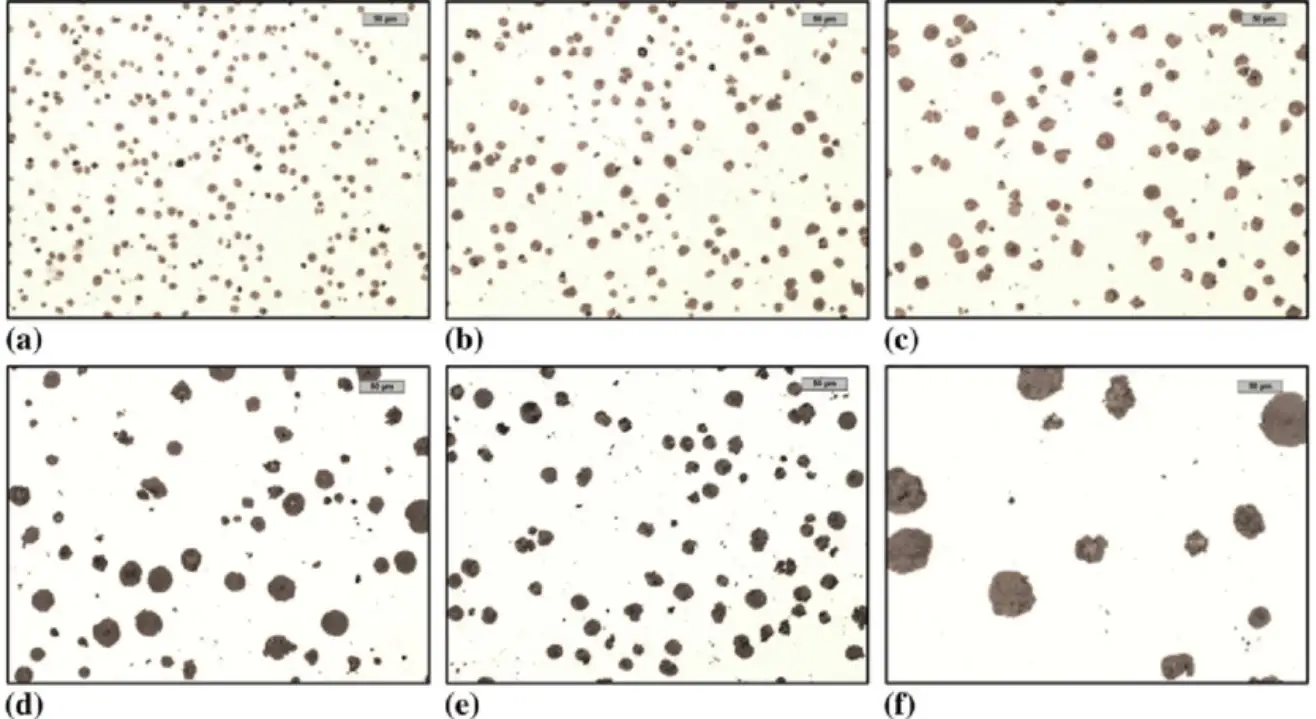65-45-12 ductile iron is a grade of cast iron characterized by its unique microstructure, which significantly influences its mechanical properties and suitability for various applications. This grade is defined by the ASTM A536 standard, where the numbers 65, 45, and 12 represent the minimum tensile strength (65,000 psi), yield strength (45,000 psi), and elongation (12%), respectively. Understanding the microstructure of 65-45-12 ductile iron is crucial for engineers and manufacturers to optimize its use in different industries.

1. Overview of Ductile Iron Microstructure
The microstructure of ductile iron, including the 65-45-12 grade, is primarily composed of spherical graphite nodules embedded in a metallic matrix. This structure is achieved by adding small amounts of magnesium to molten iron, which promotes the formation of nodular graphite instead of the flake-like graphite found in gray iron. The matrix can vary in composition, typically consisting of ferrite, pearlite, or a combination of both, depending on the cooling rate and alloying elements.
2. Composition of 65-45-12 Ductile Iron
The chemical composition of 65-45-12 ductile iron includes:
-
Carbon (C): 3.20–3.85%
-
Silicon (Si): 2.20–3.10%
-
Manganese (Mn): 0.10–0.55%
-
Sulfur (S): ≤0.02%
-
Phosphorus (P): ≤0.08%
-
Magnesium (Mg): 0.035–0.055%
-
Copper (Cu): 0.05%
-
Chromium (Cr): 0.03–0.07%
These elements contribute to the formation of the nodular graphite and the matrix structure, influencing the material’s mechanical properties.
3. Graphite Nodules in 65-45-12 Ductile Iron
The graphite in 65-45-12 ductile iron forms spherical nodules, which are classified into Types I and II according to ASTM A247 standards. Type I nodules are small and well-distributed, while Type II nodules are larger and more irregular. The nodules are typically surrounded by a matrix of ferrite and pearlite, which can vary in proportion depending on the cooling rate and alloying elements.
4. Matrix Structure: Ferrite and Pearlite
The matrix of 65-45-12 ductile iron is primarily ferritic, with approximately 5–25% pearlite. Ferrite is a soft and ductile phase that provides excellent machinability and surface finish. Pearlite, a mixture of ferrite and cementite, contributes to the strength and wear resistance of the material. The balance between ferrite and pearlite is crucial for achieving the desired mechanical properties.
5. Chill Carbides and Rim Structure
In 65-45-12 ductile iron, the rim or edge area often exhibits a higher nodular count and is predominantly ferritic. Chill carbides, which are hard and brittle phases, are typically less than 5% in any field at 100x magnification and are well-dispersed. The presence of chill carbides can influence the material’s hardness and wear resistance.
6. Heat Treatment Effects on Microstructure
Heat treatment processes can significantly alter the microstructure of 65-45-12 ductile iron, thereby affecting its mechanical properties. For instance, processes like annealing can transform pearlite into ferrite, enhancing ductility and machinability. Austempering can produce a bainitic microstructure, improving toughness and wear resistance. The specific heat treatment applied depends on the desired balance of properties for a particular application.
7. Microstructure and Mechanical Properties
The microstructure of 65-45-12 ductile iron directly influences its mechanical properties:
-
Tensile Strength: Approximately 65,000 psi
-
Yield Strength: Approximately 45,000 psi
-
Elongation: Minimum of 12%
-
Hardness: Brinell Hardness Number (BHN) ranging from 131 to 220
These properties make 65-45-12 ductile iron suitable for applications requiring a balance of strength, ductility, and machinability.
8. Applications of 65-45-12 Ductile Iron
Due to its favorable microstructure and mechanical properties, 65-45-12 ductile iron is used in various applications:
-
Automotive Industry: Engine blocks, crankshafts, and suspension components.
-
Fluid Power Systems: Cylinder blocks and valves.
-
Machinery Manufacturing: Bushings, gears, and coupling hubs.
-
Power Transmission: Sprockets and other components.
9. Comparison with Other Ductile Iron Grades
| Property | 65-45-12 Ductile Iron | 80-55-06 Ductile Iron | 100-70-03 Ductile Iron |
|---|---|---|---|
| Matrix Structure | Ferritic with pearlite | Pearlitic | Pearlitic |
| Nodular Graphite | Types I & II | Type I | Type I |
| Tensile Strength | 65,000 psi | 80,000 psi | 100,000 psi |
| Yield Strength | 45,000 psi | 55,000 psi | 70,000 psi |
| Elongation | 12% | 6% | 3% |
This comparison highlights the trade-offs between strength and ductility across different ductile iron grades.
10. Frequently Asked Questions (FAQs)
Q1: What is the significance of the numbers 65-45-12 in ductile iron?
A1: The numbers represent the minimum tensile strength (65,000 psi), yield strength (45,000 psi), and elongation (12%) of the material, as specified by ASTM A536.
Q2: How does the microstructure of 65-45-12 ductile iron affect its machinability?
A2: The ferritic matrix provides excellent machinability, allowing for high-speed machining with good surface finishes. The presence of pearlite adds strength without significantly compromising machinability.
Q3: Can the microstructure of 65-45-12 ductile iron be modified through heat treatment?
A3: Yes, heat treatment processes like annealing, normalizing, and austempering can alter the microstructure, enhancing properties such as ductility, strength, and wear resistance.
Q4: What are the advantages of using 65-45-12 ductile iron in automotive applications?
A4: Its balanced combination of strength, ductility, and machinability makes it ideal for components like engine blocks and crankshafts, which require durability and ease of manufacturing.
Q5: How does the presence of nodular graphite influence the properties of 65-45-12 ductile iron?
A5: The spherical graphite nodules improve the material’s ductility and impact resistance compared to traditional gray iron, enhancing its performance in dynamic applications.
Q6: Is 65-45-12 ductile iron suitable for high-temperature applications?
A6: While 65-45-12 ductile iron performs well at moderate temperatures, for high-temperature applications, grades with higher silicon content or alloyed ductile irons may be more suitable.
Conclusion
The microstructure of 65-45-12 ductile iron, characterized by its ferritic matrix and spherical graphite nodules, plays a crucial role in determining its mechanical properties and suitability for various applications. Understanding this microstructure allows engineers to optimize the material’s use in different industries, balancing strength, ductility, and machinability to meet specific performance requirements.

